Introduction
Although it has been maintained for quite a while and is widely believed even nowadays that the general idea of a movie is to keep the audience happily entertained for an hour and a half, the genre of horror movies, which manages even ordinary imagery look unbelievably creepy, has been proven not only worth watching but also worth being considered iconic. Psycho and The Night of the Living Dead are two perfect examples of such movies; however, the two are so strikingly different from each other that their comparison begs the question of what makes the essence of a horror film.
Indeed, it is comparatively hard to pin down the characteristics that make a horror film universally scary, at the same time making it stand out of a range of similar movies in the genre. Although a lot of works produced in the identified area rely on jump scares as the primary means of tricking the audience into paying attention and experiencing the adrenalin rush that they seek, it is much harder to create the unique environment of suspense that will keep the audience engaged throughout the entire film. Both Psycho and The Night of the Living Dead manage to create the unique atmosphere that keeps the viewers at the edge of their seats, Psycho using the slow pacing and the unsettling pauses, whereas the Nigh of the Living Dead tends to focus on lighting as the element of the mise-en-scene. As a result, both movies remain horror classics.
Analysis
Psycho
Shots
The movie makes a very efficient use of the mise-en-scene to create the chilling effect at certain points of the plot. For example, the famous shower scene, which became the staple of a horror movie, is shot mostly in a close-up. As a result of the framing used in the scene, the audience cannot see anything but the shower room and anyone but Marion. As a result, despite the lack of any other indicator of the murder being about to happen, the audience feels that the character is to face an impending doom. The uncomfortable angles at which the scene is shot carefully also create the impression of unpleasantness, thus, increasing the tension (see Fig. 1).

However, the shower scene is only one among many others that allowed the movie to write itself into the history of cinematography immediately after its theatrical release. The one in which Detective Arbogast discovers the “Mother” personality of Norman is also admittedly haunting. Similarly to the one discussed previously, the identified element of the movie creates a very suspenseful environment, yet this time it is the lack of camera movement that makes the sequence so powerful (see Fig 2). The spaciousness of the mise-en-scene involving Arbogast walking up the stairs, especially when compared to the close-ups used in other significant scenes, creates the false impression of safety, yet the fact that the camera does not move at all makes the audience second-guess themselves and wonder whether they are about to see the great reveal of the movie.
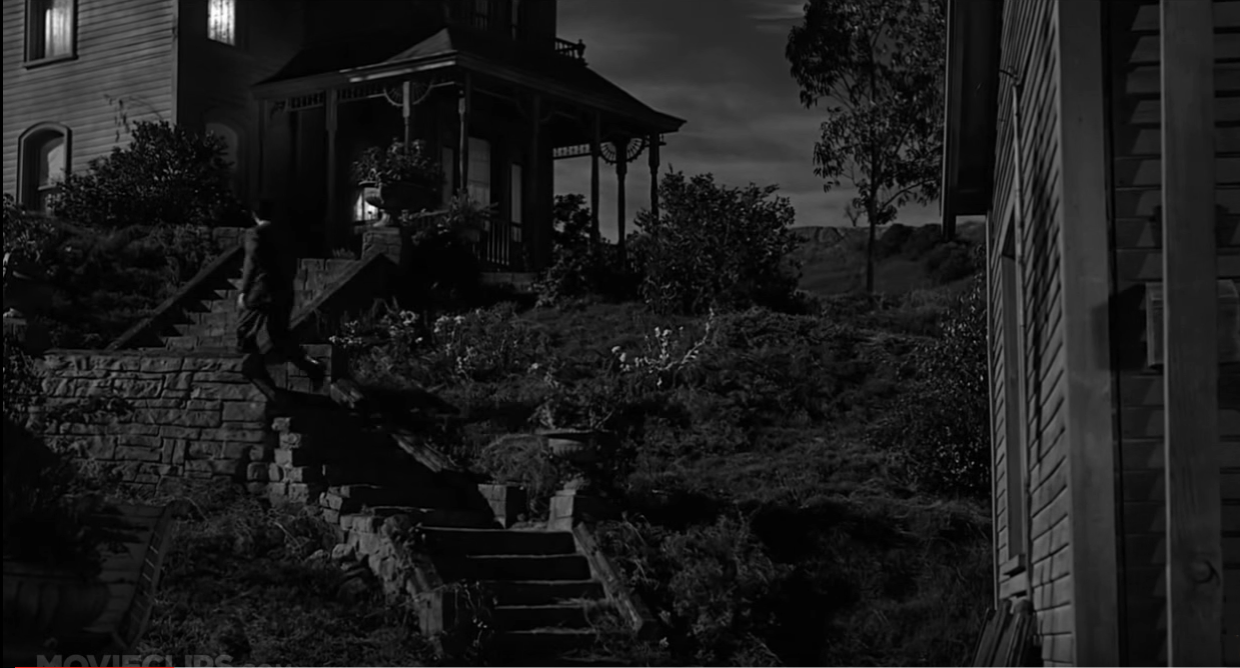
Sequences
Talking about the sequences in the movie, one must mention the shower scene again as an example of creating the environment that masks its wild tension under the guise of a seemingly innocent series of actions. When Marion is in the shower room, the camera moves from one angle to another, making the length of shots very small. At first glance, the inconsistency in the choice of the focus seems distracting and even frustrating; however, it also helps build up the atmosphere pointing to the fact that there might be something lurking behind the façade of seemingly innocent pastime.
Furthermore, the events that the suspenseful series of scenes end with is just as powerful as the impression of tension created with the help of the techniques mentioned above. By changing from comparatively slow pacing to rapid one and switching from one image to another in a more erratic way, the director tricks the audience into paying close attention. The payoff, i.e., the murder scene, becomes even more powerful because the audience is relieved from observing the gory imagery – it is only the expression of terror on the woman’s face and the shadow of the murderer with a knife in their hand that indicates a crime. The close-up of Marion’s eye that ends the sequence leaves the unforgettable impact of both shock and unpleasantness, at the same time making the audience sympathize with the victim (see Fig. 3).
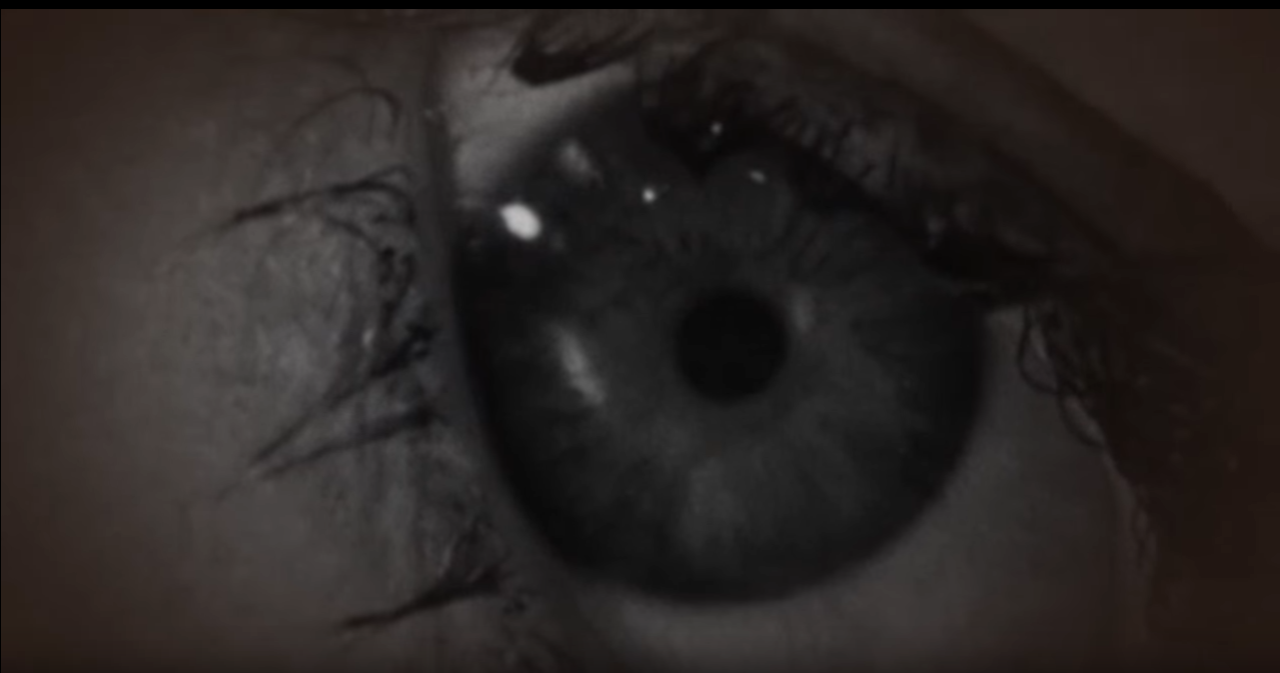
Furthermore, the sequence that reveals the actual mummified mother to the audience should also be addressed as another set of scenes that have become a canon of making a horror movie. One might argue that the film did not need the imagery as a narrative tool in the case in point. Indeed, seeing that the shock value was kept to a minimum in the rest of the scenes, the identified reveal could have occurred in a more tasteful manner. While the visual effects used in the movie were stellar at the time, they have not aged well and look rather silly nowadays, especially the mummy (see Fig. 4). Furthermore, whereas the slow sequence involving a dramatic and scary reveal had not been done to death by the time that the movie was released, it does not produce the amount of shock that it used to. Nonetheless, the overall impression of the sequence remains quite strong since, from a narrative perspective, the identified plot point becomes the big reveal of Norman’s mystery. Put differently, it serves as the means of displaying the terrifying nature of a mental breakdown and the effects that it has on Norman, whose final appearance in the movie marks his final descent into madness (see Fig. 4).
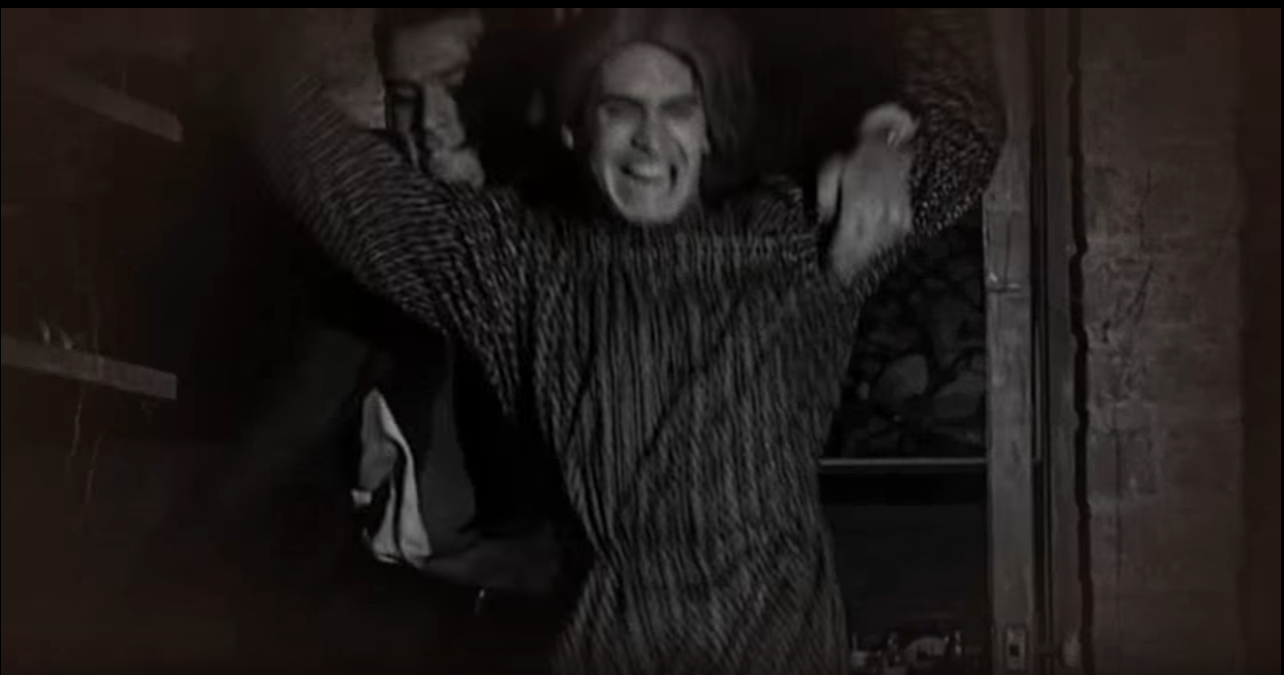
Sounds
Psycho can also be characterized by the director’s careful treatment of sounds and especially the soundtrack. Hitchcock himself pointed to the fact that music was the primary tool used to create the atmosphere of creepy suspense. The erratic sounds of violin, which accompany every event that is supposed to keep the audience at the edge of their seats is quite unnerving and, at first sight, has no specific purpose other than to mark the beginning of a nightmarish sequence. However, paying closer attention to the soundtrack, one will see that it is the monotone of the score that makes the necessary impression on the viewer.
Despite the fact that the same soundtrack is used to denote tension in the movie due to the low budget, one must give the director credit for placing the score immediately after the shock of the scene is revealed instead of marking the impending doom. As a result, the score does not enter the spoiler territory and helps the film retain its mystery.
One could argue that the monotonous nature of the score could become repetitive after having been used in several important scenes. However, Hitchcock used the music very wisely, incorporating it only into the scenes that point the darkest plot points in the movie. As a result, the regurgitation of the same note several times does not create the impression of laziness; instead, it is interpreted by the audience immediately as an essential element that contributes to the overall experience and makes the movie all the scarier. In fact, the lack of harmony in the soundtrack and the repetitive notes strike a chord with the title of the movie, thus, referring the audience to the word play used by the author. Indeed, the psychotic nature of the soundtrack that manifests itself in the staccato violin sounds echoes with the term “psycho,” as well as the fact that the name “Norman” as in “Norman Bates” is a reference to the concept of a norm, especially the social one. In other words, the score introduces the audience to not only the dark realm of Norman’s psychosis but also the idea that the psycho portrayed in the movie may be a part of the human nature, in general. The idea of a norm being subverted and questioned is admittedly unsettling, and it leaves the audience delving in introspect, observing their own feelings and focusing on their experiences as viewers.
Audience’s Sympathy
Surprisingly enough, the movie avoids creating the clichéd image of a cool-blooded murderer that the viewers immediately want behind bars. Instead, Norman Bates is portrayed in a sympathetic manner that makes the audience root for him and empathize with him. Even as the viewers observe his final act of violence, which is successfully stopped by Arbogast, they cannot help feeling sorry for the person that had been under the aegis of his possessive mother and refused to admit her death. Therefore, it is not the murder or the scary imagery as much as the idea that a psychopath may lurk underneath any personality, including the one of the viewer, which makes the movie truly horrifying.
Night of the Living Dead
Shots
Being very different from Psycho, Night of the Living Dead relies on the shock value to a considerably greater extent, which can be traced even in the title of the movie. The film grabs the attention of the viewer greedily in an endeavor to fuel the sense of fear that the audience will be under throughout the entire movie. Nevertheless, it could be argued that Night of the Living Dead has the moments of subtlety that are quite comparable to Psycho.
The mise-en-scene in the part where the dead rising from the grave leaves an especially significant impact on the viewer due to the shot used by the director. The image of people walking in a line is often used as the means of denoting the fact that they work as a team and are linked by a common goal. However, the specified approach is typically utilized to stress the qualities of positive characters; thus, when used in this movie as the means of rendering the zombies’ common intention of consuming people, it creates a truly horrifying effect (see Fig. 4). As a result, the zombies can be mistaken for not only people but also people with good intentions and comparatively positively characteristics. Thus, the narrative of the movie suggests that the audience should take an introspect into the depth of their selves and identify with the nightmarish creatures.

Sequences
As explained above, the opening sequence that includes awkwardly long shots of the car going along a rather picturesque scenery helps set the mood for the movie. From the narrative perspective, it can be viewed as a foreshadowing of the nightmarish realm that the audience will be invited to witness during the next hour and a half of the film (see Fig. 6). The identified approach toward building suspense is similar to the one used in Psycho, where the lingering manner of filming served as the tool to increase the shock value of the reveal in the next scene.
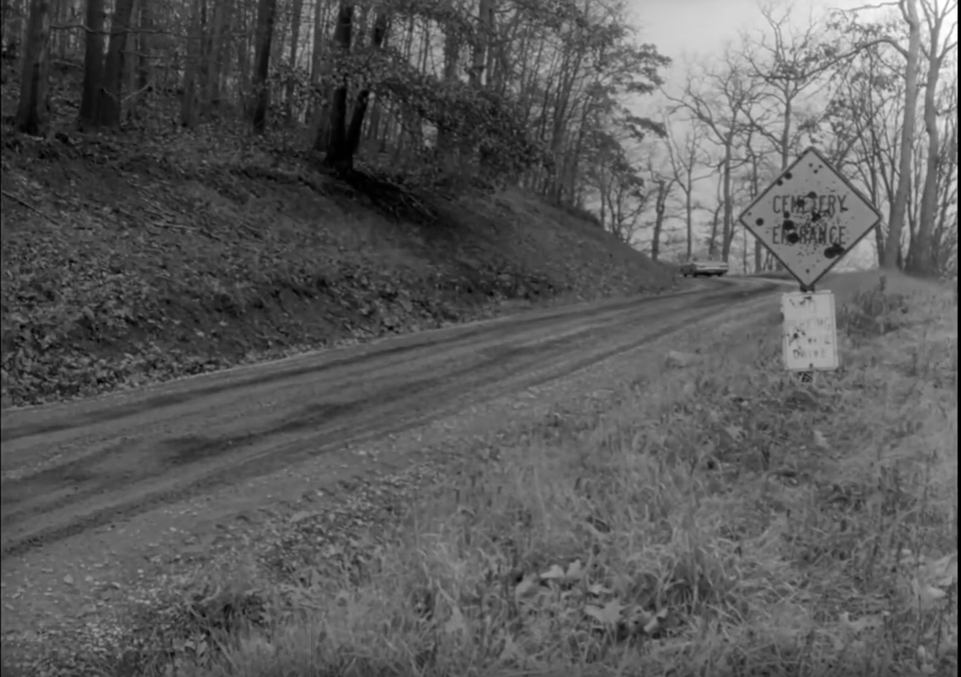
Furthermore, similarly to Psycho, the Night of the Living Dead makes a very efficient use of the mise-en-scene as the tool for rendering the impression of dread and fear. In fact, some of the strategies used in the two movies are eerily similar to each other. For instance, the sequence in the barn house includes a close-up of Barbra as she tries to escape the zombies (see Fig. 7). The focus on Barbra and the emotions that she experiences as opposed to the scary thing of which the viewers are supposed to be afraid allow developing sympathy for the character and push the plot forward. One might argue that the identified strategy is used since, in hindsight, the main villains of the movie, i.e., the zombies, are not as much of a threat since it is indicated that they move very slowly. Therefore, to make the narration more rapid and intense, the movie director shifted the emphasis from the actual threat, i.e., the zombies, to the protagonists.
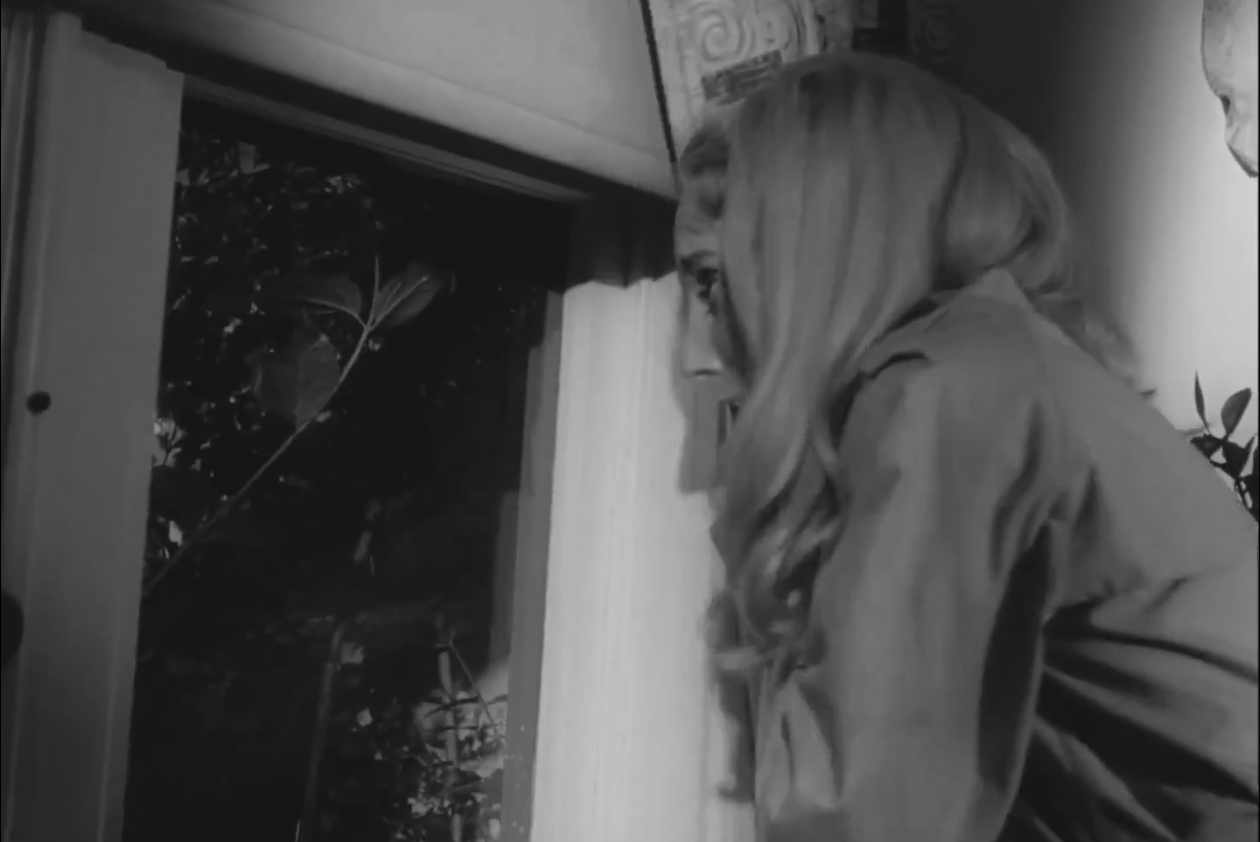
More importantly, by revealing the zombies too often, the movie would have dehumanized them, thus, depriving the narration of an essential idea that there is a very small distinction between a living being and the monster portrayed in the picture.
Sounds
Although the soundtrack to Night of the Living Dead is not as haunting as the one in Psycho, it also has a very distinct staying power. The opening scene, which tricks the audience to delve into a seemingly peaceful environment, is followed by the score that immediately creates a very unsettling mood. As soon as the music starts, the viewers immediately note that the landscape, which they first saw as pastoral quickly turns into sinister and gloomy.
Furthermore, one must give the authors of the soundtrack to the film credit for creating the atmosphere of ultimate horror in the scene involving the zombies rise from their graves. Where contemporary composers would introduce the score that would scream of the horror witnessed by the audience, the 1968 movie simply offers the sounds of crickets in the background. As a result, the viewers perceive what they witness on the screen as part and parcel of reality. Thus, the shock intensifies extensively.
Audience’s Sympathy
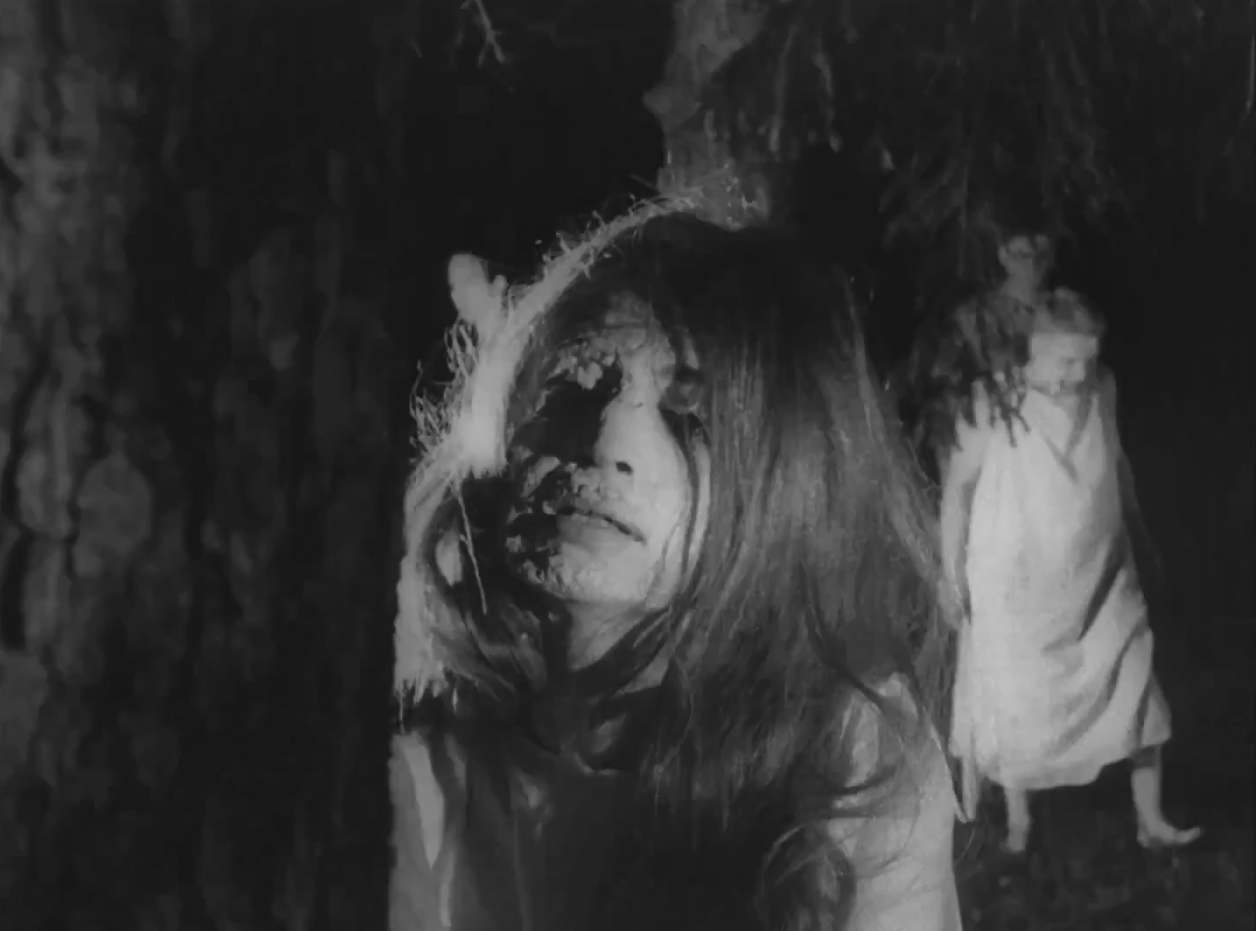
To make sure that the viewers should empathize with the character, one must consider making the latter as humane and human-looking as possible. The identified task is especially challenging for the authors of horror movies since they venture into the horror realm that can hardly spark any emotion aside from fear. However, the Night of the Living Dead can also be viewed as a weird existential trip into the analysis of where the difference between zombies and people lies (Fig. 7).
Similarities
Despite the fact that the two movies have a completely different nature, as well as the choices of tools used to render the atmosphere of fear, both of them address the same concept of a norm in the contemporary society. Both films, therefore, indicate that there is an element of darkness in everyone and that every single person is only several steps away from becoming a puppet of their own psychosis. Psycho may be more obvious in its symbolism, seeing that the Night of the Living Dead hides its message under the guise of a supernatural element. Indeed, compared to the slow descent into madness portrayed in Psycho, the idea of being chased by zombies might seem childish and not as cringe-worthy as a study of an insane person’s mind. However, a closer look at the Night of the Living Dead will reveal that it, in fact, conceals a lot of innuendoes and references to the concept of self, as stressed above Therefore in a way, the scene portraying Barbara hiding from zombies can be placed alongside with the “shower scene” from Psycho as a stellar example of an impeccable portrayal of the fragility of the human nature.
Conclusion
Although the tools used to make the audience have a unique experience of watching a horror movie in Psycho are quite different from the ones in the Night of the Living Dead, both movies have an impressive amount of things in common from the narrative perspective. Particularly, the way in which the shots are framed, and the manner in which the mise-en-scene is structured can be considered the aspects of the films that make them shine among a range of other horror movies. The emphasis on the experience of the lead character helps understand the complex ethical dilemma that the movies pose to the viewers. To be more exact, both Psycho and the Night of the Living Dead beg the question of how easy it is to cross the line between sanity and madness.
The narrative devices used in the movies are truly spectacular. The angles used, the shadows cast, and the time taken to develop the character contribute to the increase in the audience’s engagement. As fun as they are horrifying, both Psycho and the Night of the Living Dead are an example of a perfectly done horror movie, and they became instant classics for a good reason. A fun experience that one must not miss, the two movies are bound to spark a range of imitations in the future as well.
Works Cited
Night of the Living Dead. Directed by George A. Romero, performances by Duane Jones, Judith O’Dea, and Marilyn Eastman, The Walter Reade Organization, 1968.
Psycho. Directed by Alfred Hitchcock, performances by Anthony Perkins, Vera Miles, and John Gavin, Paramount Pictures, 1960.